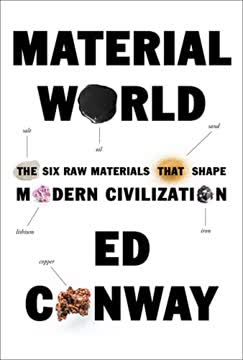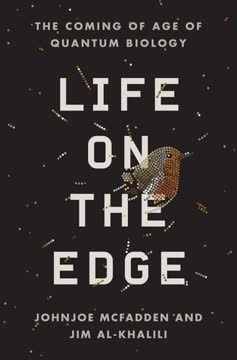Puntos clave
1. La Vida es un Sistema Químico e Informacional Notable
"En última instancia, la vida surge de las reglas relativamente simples y bien entendidas de la atracción y repulsión química, así como de la formación y ruptura de enlaces moleculares."
Complejidad a Partir de la Simplicidad. La extraordinaria complejidad de la vida emerge de interacciones químicas fundamentales. A pesar de parecer mágica, la vida opera a través de principios físicos y químicos precisos que pueden ser comprendidos científicamente.
Características Clave de la Química de la Vida:
- Construida alrededor de polímeros basados en carbono
- Capaz de almacenar y transformar información
- Capaz de autoorganizarse y reproducirse
- Mantiene un orden interno mientras interactúa con el entorno externo
Milagro Molecular. La elegancia de la vida radica en su capacidad para utilizar diferentes configuraciones de polímeros de carbono lineales para generar tanto almacenamiento de información estable como diversas actividades químicas, creando un sistema que es simultáneamente simple y profundamente complejo.
2. Las Células Son las Unidades Fundamentales de la Vida
"Las células no solo son la unidad estructural básica de todos los organismos vivos, sino que también son la unidad funcional básica de la vida."
Fundamentos Celulares. Las células representan los bloques de construcción fundamentales de la biología, poseyendo todas las características esenciales de los sistemas vivos. Cada célula es un mundo vivo completo y sofisticado capaz de crecer, reproducirse y actuar con propósito.
Características Celulares:
- Entidades autosuficientes con membranas
- Capaces de metabolismo y procesamiento de información
- Se reproducen a través de la división celular
- Se comunican con el entorno externo
- Mantienen un orden interno
Complejidad Microscópica. Los microscopios modernos revelan las células como redes intrincadas de microambientes químicos organizados, mucho más sofisticadas que simples unidades estructurales. Son máquinas dinámicas de procesamiento de información que encarnan los principios fundamentales de la vida.
3. Los Genes Son los Portadores de Información de la Herencia Biológica
"La vida no puede existir sin genes: cada nueva generación de células y organismos debe heredar las instrucciones genéticas que necesita para crecer, funcionar y reproducirse."
Plano Genético. Los genes sirven como el mecanismo de almacenamiento y transmisión de información de la vida, codificando instrucciones para construir y mantener organismos a través de las generaciones. Representan un sistema de información biológica notablemente estable pero adaptable.
Características de la Información Genética:
- Almacenada en moléculas de ADN
- Capaz de replicación precisa
- Transmite características heredadas
- Permite variación a través de mutaciones
- Proporciona un plano para el desarrollo del organismo
Significado Evolutivo. La información genética permite la continuidad de la vida mientras proporciona mecanismos para la adaptación y el cambio, haciendo posible la evolución a través de la selección natural.
4. La Evolución Impulsa la Diversidad Biológica a Través de la Selección Natural
"La evolución por selección natural ha generado poblaciones de criaturas cada vez más complejas y diversas... sin desviarse nunca de las leyes de la ciencia."
Mecanismo Creativo. La selección natural es un proceso profundamente creativo que genera la extraordinaria diversidad de la vida sin intervención sobrenatural. Opera a través de principios fundamentales de variación, herencia y supervivencia diferencial.
Principios de la Selección Natural:
- Requiere reproducción
- Necesita un sistema de información hereditaria
- Exige variabilidad genética
- Selecciona las características más adaptativas
- Produce una complejidad creciente a lo largo del tiempo
Vida Interconectada. La evolución revela que todas las formas de vida están fundamentalmente relacionadas, surgiendo de un linaje ancestral compartido y adaptándose continuamente a los desafíos ambientales.
5. La Química Permite las Complejas Capacidades Organizativas de la Vida
"La mayoría de los aspectos de la vida pueden entenderse bastante bien en términos de física y química, aunque se trate de una forma extraordinaria de química que es altamente ordenada y organizada."
Fundamentos Químicos. Los procesos de la vida son fundamentalmente químicos, involucrando redes intrincadas de reacciones controladas por enzimas y organizadas a través de sofisticados mecanismos moleculares.
Características de la Vida Química:
- El metabolismo como principio organizador central
- Reacciones controladas por enzimas
- Interacciones moleculares precisas
- Transformación de energía
- Compartimentación de procesos
Maquinaria Molecular. Las células operan como fábricas químicas complejas, con máquinas moleculares que realizan funciones especializadas con notable precisión y eficiencia.
6. El Procesamiento de Información es Central para el Funcionamiento Biológico
"El procesamiento de información permea todos los aspectos de la vida."
Cálculo Biológico. Los sistemas vivos recopilan, interpretan y responden continuamente a la información del entorno interno y externo, demostrando un comportamiento intencionado a través de una gestión compleja de la información.
Mecanismos de Procesamiento de Información:
- Regulación genética
- Vías de señalización celular
- Adaptación ambiental
- Toma de decisiones intencionadas
- Memoria y aprendizaje
Sistemas de Información Modulares. Los sistemas biológicos utilizan módulos de información interconectados que permiten respuestas flexibles y adaptativas a las condiciones cambiantes.
7. El Conocimiento Biológico Puede Transformar el Potencial Humano
"Tenemos una oportunidad única para utilizar nuestra comprensión de la vida para cambiar el mundo."
Aplicaciones Científicas. Un entendimiento biológico avanzado permite intervenciones revolucionarias en la atención médica, la agricultura, la gestión ambiental y la innovación tecnológica.
Áreas de Potencial Transformador:
- Tratamientos médicos
- Ingeniería genética
- Mitigación del cambio climático
- Producción de alimentos
- Prevención de enfermedades
Innovación Responsable. El progreso científico debe equilibrarse con consideraciones éticas y una comprensión integral de las posibles consecuencias.
8. Comprender la Vida Requiere una Perspectiva Interdisciplinaria
"La biología necesitará cada vez más la asistencia de científicos de otras disciplinas, como matemáticos, informáticos y físicos."
Enfoque Holístico. Comprender la complejidad de la vida exige una investigación colaborativa y multidisciplinaria que integre múltiples perspectivas científicas.
Colaboración Interdisciplinaria:
- Biología molecular
- Ciencia de la computación
- Física
- Matemáticas
- Filosofía
Pensamiento en Sistemas Complejos. Comprender la vida requiere ir más allá de enfoques reduccionistas para adoptar metodologías sistémicas e integradoras.
9. Las Consideraciones Éticas Son Cruciales en las Aplicaciones Biológicas
"Los debates sobre el bien público deben estar impulsados por el conocimiento, la evidencia y el pensamiento racional, y no por ideologías, creencias infundadas, codicia o extremos políticos."
Ciencia Responsable. Las innovaciones biológicas deben evaluarse a través de rigurosos marcos éticos que consideren los posibles impactos sociales y ambientales.
Consideraciones Éticas:
- Privacidad genética
- Acceso equitativo a tratamientos
- Consecuencias ambientales
- Posible uso indebido de tecnologías
- Efectos sistémicos a largo plazo
Diálogo Transparente. Las discusiones abiertas y basadas en evidencia que involucren a científicos, responsables políticos y al público son esenciales para una innovación biológica responsable.
10. La Vida es Fundamentalmente Interconectada y con Propósito
"Todos los individuos están relacionados con cada otra forma de vida en el planeta."
Unidad Ecológica. Las formas de vida están profundamente interconectadas, compartiendo características químicas e informacionales fundamentales a través de diversas especies.
Principios de Interconexión:
- Patrimonio genético compartido
- Interdependencia ecológica
- Mecanismos evolutivos comunes
- Influencia ambiental mutua
- Complejidad sistémica
Perspectiva Planetaria. Comprender la interconexión de la vida promueve enfoques holísticos para la gestión ambiental y la conservación de especies.
Última actualización:
FAQ
What's "What Is Life?: Five Great Ideas in Biology" about?
- Exploration of Life's Definition: The book delves into the fundamental question of what it means to be alive, exploring the complexity and diversity of life on Earth.
- Five Key Biological Ideas: Paul Nurse presents five central concepts in biology: The Cell, The Gene, Evolution by Natural Selection, Life as Chemistry, and Life as Information.
- Interconnectedness of Life: It emphasizes the interconnectedness of all living organisms and how these ideas help us understand life's processes.
- Scientific and Personal Journey: The book combines scientific insights with personal anecdotes from the author's life and career in biology.
Why should I read "What Is Life?: Five Great Ideas in Biology"?
- Comprehensive Overview: It provides a comprehensive overview of the fundamental principles of biology, making it accessible to both novices and those with a background in science.
- Insightful Perspectives: The book offers insightful perspectives on how life functions and the scientific discoveries that have shaped our understanding.
- Relevance to Modern Issues: It discusses the implications of biological knowledge on current global challenges, such as climate change and healthcare.
- Engaging Narrative: Paul Nurse's engaging narrative style makes complex scientific concepts understandable and relatable.
What are the key takeaways of "What Is Life?: Five Great Ideas in Biology"?
- Five Biological Concepts: Understanding the cell, gene, evolution, chemistry, and information are crucial to comprehending life.
- Interconnectedness and Evolution: All life forms are interconnected through evolution, sharing a common ancestry and genetic makeup.
- Life as Chemistry and Information: Life is a complex interplay of chemical reactions and information processing, which allows organisms to function and adapt.
- Scientific Responsibility: The book highlights the responsibility of scientists and society to use biological knowledge ethically and sustainably.
How does Paul Nurse define life in "What Is Life?: Five Great Ideas in Biology"?
- Three Principles of Life: Life is defined by the ability to evolve through natural selection, being a bounded physical entity, and functioning as a chemical, physical, and informational machine.
- Evolutionary Capability: The ability to reproduce, have a hereditary system, and exhibit variability is essential for evolution.
- Physical and Informational Nature: Life forms are physical entities that manage information to maintain and reproduce themselves.
- Chemical Complexity: Life's chemistry is based on large carbon-based polymers, which store information and perform diverse functions.
What is the significance of "The Cell" in "What Is Life?: Five Great Ideas in Biology"?
- Basic Unit of Life: The cell is described as the fundamental structural and functional unit of all living organisms.
- Cell Theory: The book explains cell theory, which states that all living things are composed of cells, and cells are the simplest entities that can be considered alive.
- Diversity and Commonality: While cells vary greatly in size and function, they share common features that define life.
- Role in Growth and Repair: Cells are responsible for growth, repair, and reproduction, making them central to understanding life processes.
How does "The Gene" contribute to our understanding of life in "What Is Life?: Five Great Ideas in Biology"?
- Inheritance and Variation: Genes are the key to understanding inheritance and the variation observed in living organisms.
- Mendel's Discoveries: The book discusses Gregor Mendel's pioneering work on inheritance, which laid the foundation for modern genetics.
- DNA as Genetic Material: It explains how DNA encodes genetic information and how this information is passed on through generations.
- Genetic Code and Proteins: The genetic code is translated into proteins, which perform essential functions in cells and organisms.
What role does "Evolution by Natural Selection" play in "What Is Life?: Five Great Ideas in Biology"?
- Mechanism of Diversity: Evolution by natural selection is presented as the process that generates the diversity of life forms.
- Darwin's Contribution: The book highlights Charles Darwin's role in developing the theory of natural selection and its impact on biology.
- Adaptation and Survival: Natural selection explains how organisms adapt to their environments and how new species arise.
- Interconnectedness of Life: It emphasizes that all life is connected through evolutionary history, sharing common ancestors.
How is "Life as Chemistry" explained in "What Is Life?: Five Great Ideas in Biology"?
- Chemical Reactions in Life: Life is described as a series of complex chemical reactions that sustain living organisms.
- Role of Enzymes: Enzymes are crucial for catalyzing the chemical reactions that make up metabolism.
- Carbon-Based Polymers: The book explains how carbon-based polymers, like DNA and proteins, are central to life's chemistry.
- Order from Chaos: Life's chemistry creates order from chaos, allowing organisms to maintain structure and function.
What does "Life as Information" mean in "What Is Life?: Five Great Ideas in Biology"?
- Information Processing: Life is viewed as an information-processing system, where organisms gather, store, and use information to survive.
- Genetic Information: DNA stores genetic information, which is used to build and regulate living organisms.
- Gene Regulation: The book discusses how gene regulation allows cells to respond to changes and maintain homeostasis.
- Purposeful Behavior: Information management enables organisms to act with purpose, adapting to their environments.
What are the best quotes from "What Is Life?: Five Great Ideas in Biology" and what do they mean?
- "Life is a chemical, physical, and informational machine." This quote encapsulates the book's view of life as a complex system that integrates chemistry, physics, and information.
- "We are bound by a deep connectedness to all other life." It highlights the interconnectedness of all living organisms through shared evolutionary history and ecological relationships.
- "The universe is unimaginably vast... life as it is on Earth today started just once." This emphasizes the uniqueness and singular origin of life on Earth, despite the vastness of the universe.
- "It is only through death that there can be life." This reflects the role of natural selection in driving evolution and the continuous cycle of life and death.
How does Paul Nurse's personal journey influence "What Is Life?: Five Great Ideas in Biology"?
- Early Fascination with Biology: Nurse's childhood curiosity about a butterfly sparked his lifelong interest in biology.
- Scientific Career: His experiences as a geneticist and cell biologist provide a personal perspective on the scientific discoveries discussed in the book.
- Research Contributions: Nurse shares insights from his research on cell cycle control, which has implications for understanding cancer and other diseases.
- Philosophical Reflections: His personal journey informs his reflections on the ethical and societal implications of biological knowledge.
What are the implications of "What Is Life?: Five Great Ideas in Biology" for the future?
- Healthcare Advancements: The book discusses how biological knowledge can lead to new treatments for diseases and improve healthcare.
- Environmental Challenges: It highlights the role of biology in addressing global challenges like climate change and biodiversity loss.
- Ethical Considerations: The book raises ethical questions about genetic engineering, synthetic biology, and the use of biological knowledge.
- Interdisciplinary Collaboration: It emphasizes the need for collaboration between scientists, policymakers, and society to address complex biological issues.
Reseñas
"¿Qué es la vida?" explora conceptos biológicos fundamentales a través de cinco ideas clave: células, genes, evolución, química e información. Escrito por el laureado con el Premio Nobel Paul Nurse, el libro ofrece una visión accesible de las complejidades de la vida, desde las funciones celulares hasta la herencia genética. Mientras que algunos lectores lo encontraron esclarecedor y bien escrito, otros sintieron que carecía de profundidad u originalidad. Las fortalezas del libro residen en sus explicaciones claras y anécdotas personales, aunque algunos criticaron su distribución desigual de la información y su enfoque simplista hacia temas complejos. En general, sirve como una sólida introducción a la biología para lectores en general.
Similar Books












